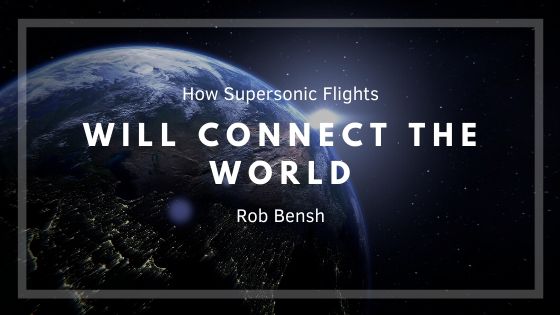Although today’s commercial airplanes transport thousands of people around the world every day, those trips are from short when flying over any ocean or continent. Some flights take more than half a day to complete and still require a transfer. However, the supersonic jets that tomorrow might usher in could reduce travel time to a fraction of that time thanks to the ability to fly faster than more than 1,000 miles per hour. And those planes could be on the market before the decade is out.
Imagining a world where you can fly from New York City to England in just over three hours might sound too good to be true, but some companies are willing to make that bet. In fact, airplane maker Aerion Corporation already has over 20 of those supersonic jets from fractional jet ownership and leasing company Flexjet. That’s no small feat when you consider that each craft will cost $120 million.
Supersonic flight doesn’t come without its drawbacks. First, it’s expensive. And if that price is passed along to the passenger, the faster mode of travel may never make it off the ground so to speak. Of course, there are always people who would be willing to pay more to spend less time in a supersonic plane. A representative from one company that books charter flights, PrivateFly, believes that the right crowd will pay twice as much for such a convenience.
Secondly, the sonic boom that enables aircraft to move at such speeds can also be frightening and frustrating for those people who remain on the ground. However, at least one company has found a way to prevent the boom from reaching the earth by redirecting it back up into the atmosphere. Japanese engineers are working on one airliner, Overture, which will focus mostly on trans-oceanic routes. The craft will only move at supersonic speed when over the water and not when over land, where it could prove bothersome to the people who live and work there.
Finally, companies will have to determine how to reduce their carbon emissions as both consumers and corporate partners turn an eye toward climate change.
Still, manufacturers and airlines alike remain hopeful about the future of supersonic flight.

